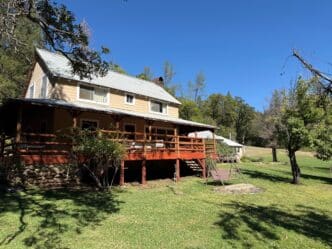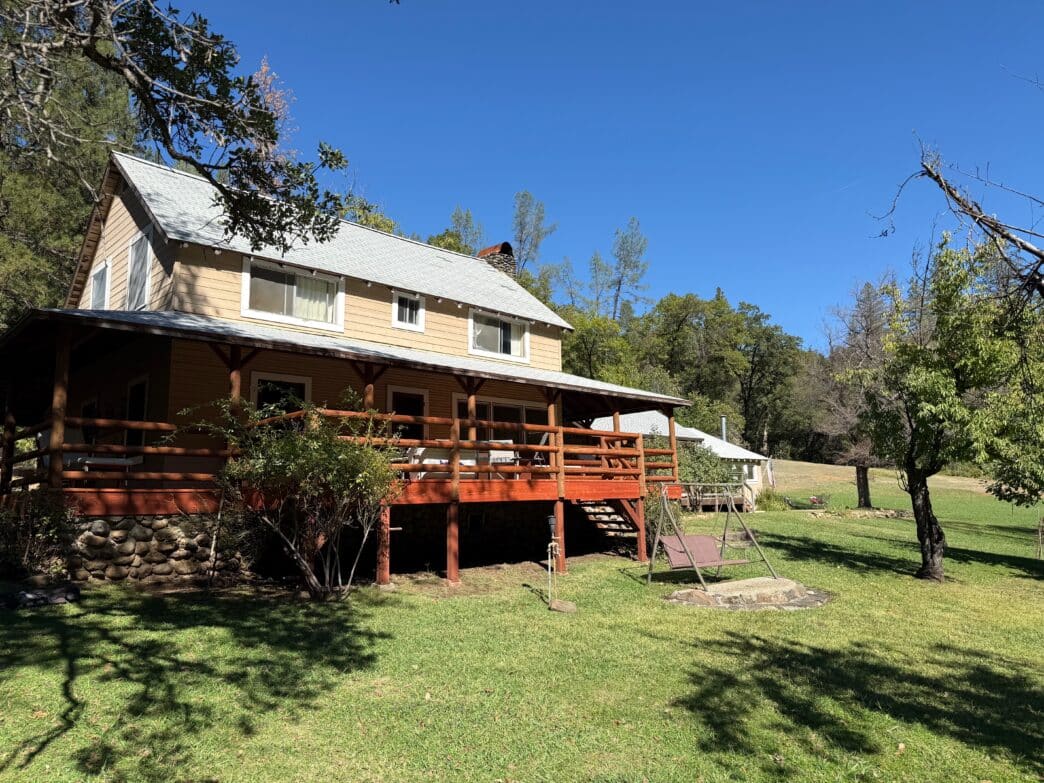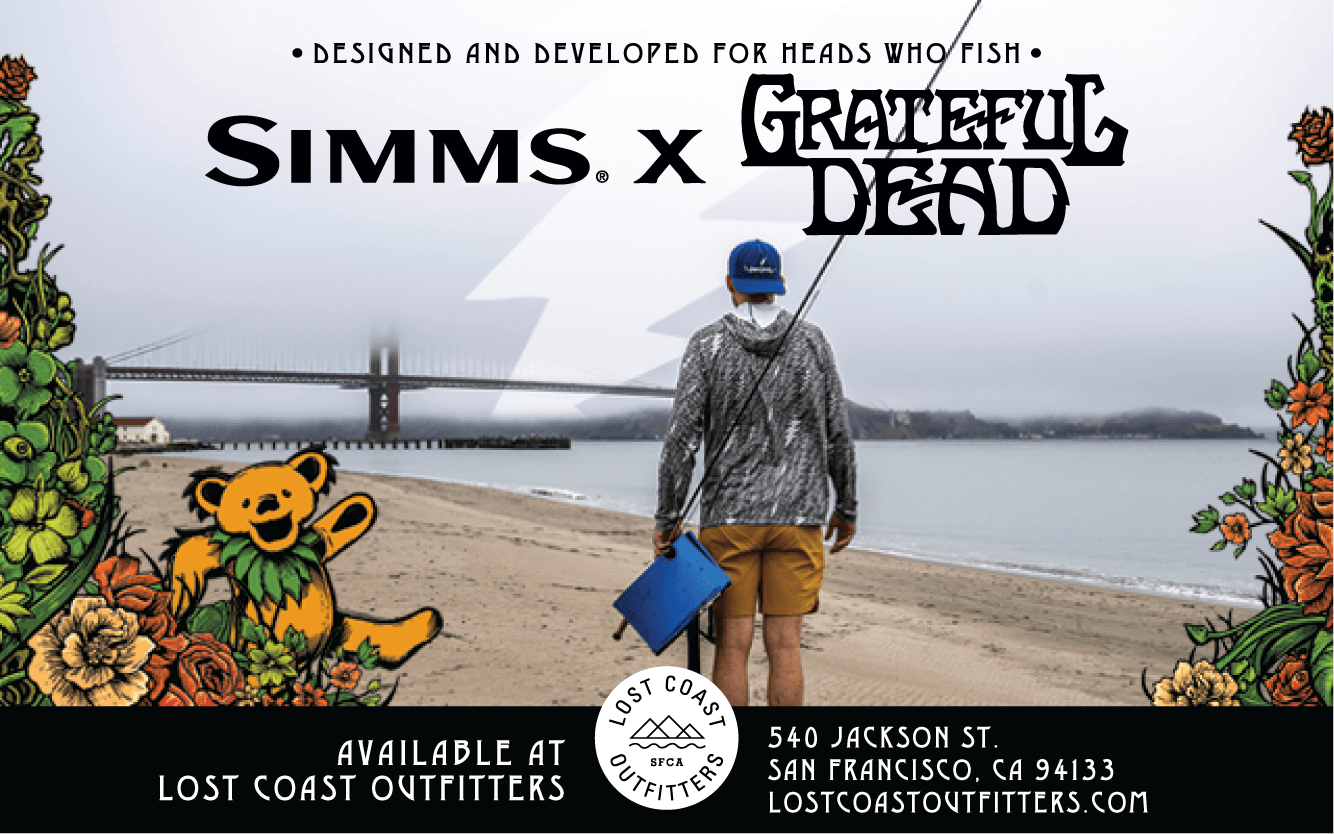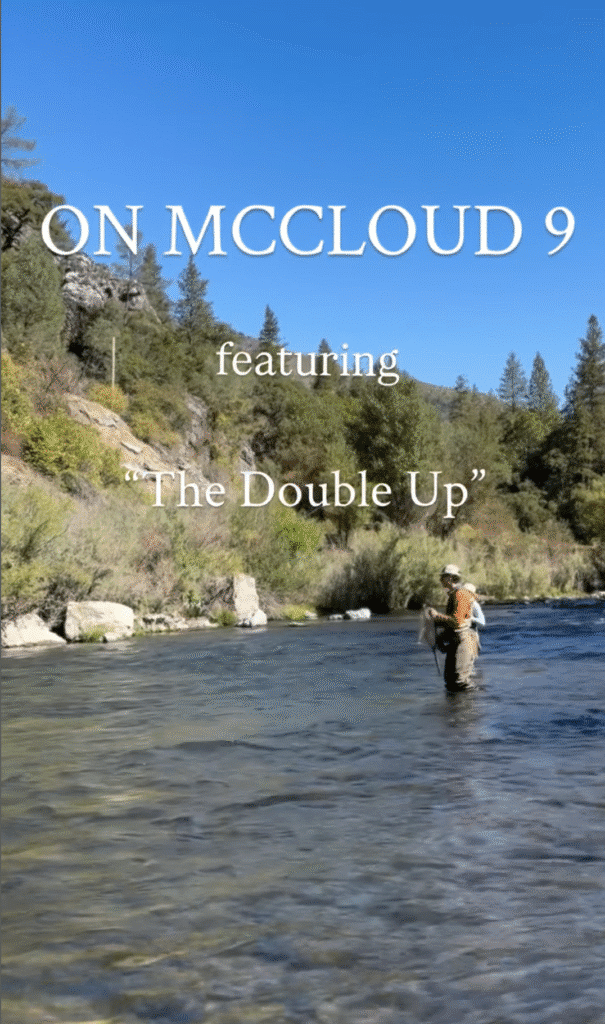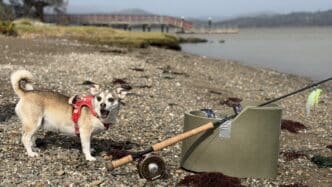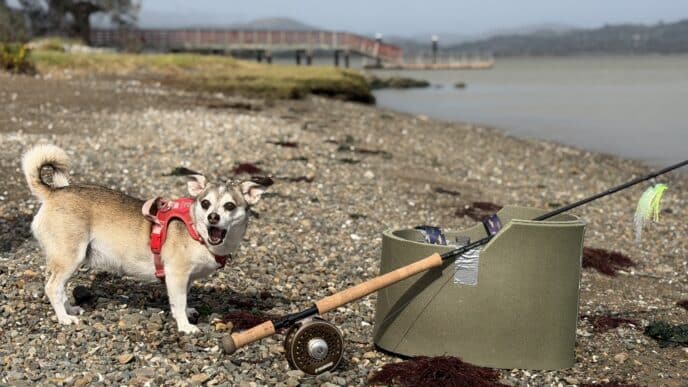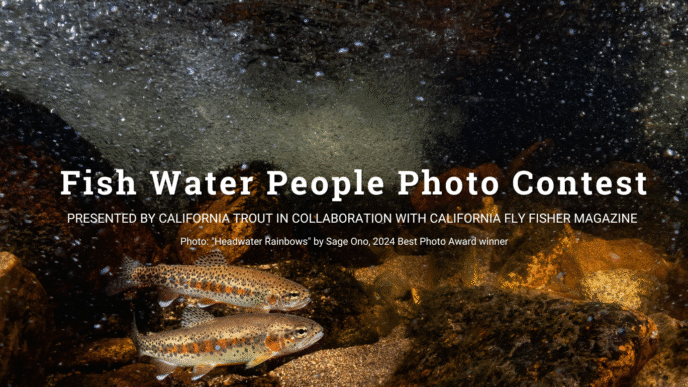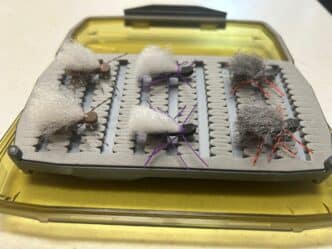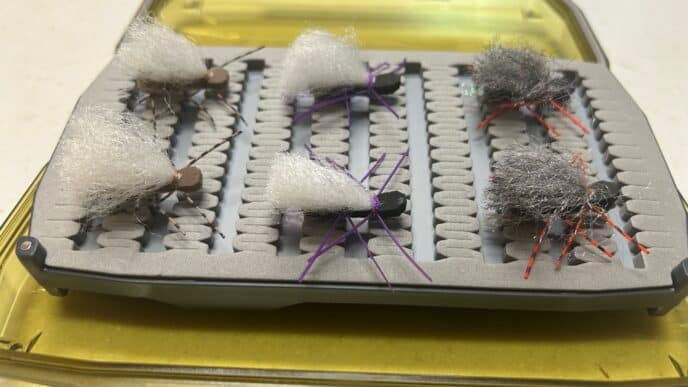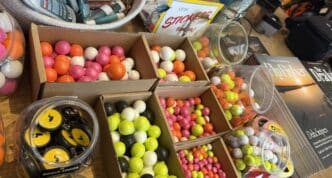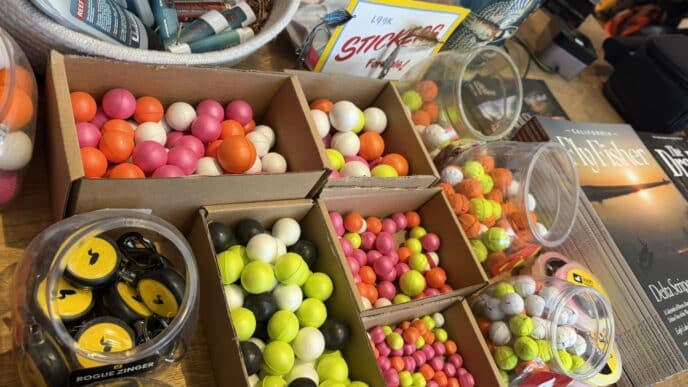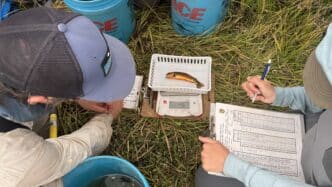The Historic Fishing Club on the McCloud
Tracey Diaz is delivering an elevator pitch for a fishing trip this weekend. Her efforts to quantify fly fishing on seven miles of private, freestone water—both firsts for me—are as appreciated as they are redundant; I already know I’m going.
It’s the historic Bollibokka Fishing Club on the McCloud River, hosted by CalTrout. I consider the strength of friendships my weekend cancellations will test, but when an opportunity like this calls, one must answer.
EN ROUTE TO THE MCCLOUD
We sneak in a half day on the Upper Sacramento and make a pit stop to see our friends at The Fly Shop in Redding. Casual mention of “Bolli” earns deferential nods of approval—The Fly Shop is the operator of the heritage lodges on Bollibokka’s 3,000 acres.
Mike Mercer tours us around the shop, curating a hopper-dropper pattern by hand: 8 feet of 3X nylon leader by TroutHunter tailed by a Double Chubby Chernobyl (tan, #12), above a TB Pat’s Rubber Legs (brown, #8), Jigged Pheasant Tail Frenchie (the one with the red collar, #16) or Doug’s Sweet Pea (olive, #16). Tracey and I split-test each of the nymphs and find the fish going for both. Our set-ups see no adjustment over the weekend.
My first look at Conant stuns me. It is clear and brilliant, shouldered by umbrellas of green Darmera leaves, grassy tufts of fescue, and gigantic slabs of gray slate. Well-placed boulders create gentle waterfalls. We enjoy some success before signing off with loved ones (service of any kind is non-existent at the property) and slip through the deep forest to our weekend home.

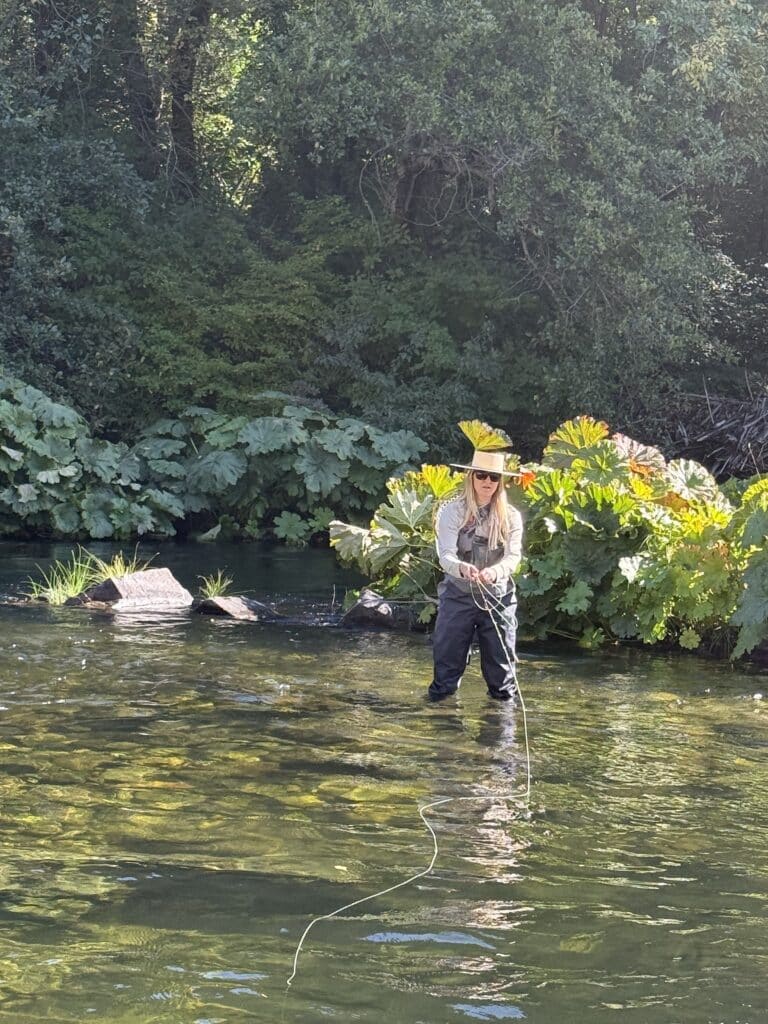
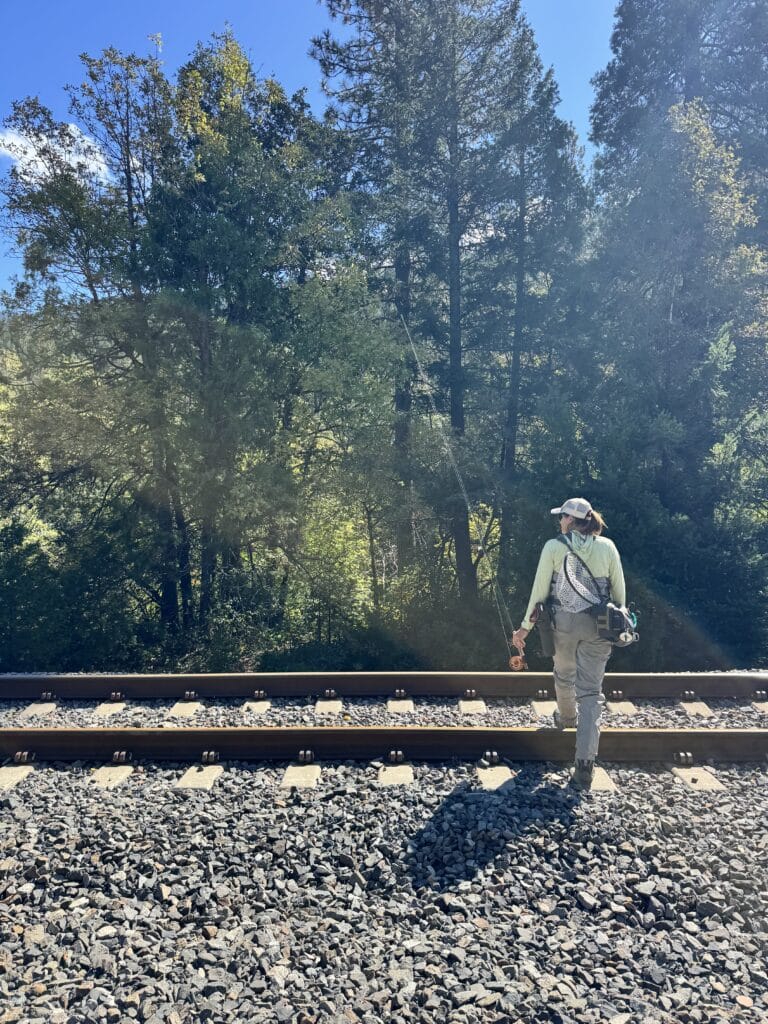
A PLACE SUSPENDED IN TIME
Peace and languor greet us at the gate. Bollibokka is a time capsule.
Translating to “black manzanita” in Wintu, “Bollibokke” was named after the region’s native flora by the Winneman Wintu tribe of the McCloud. To experience the river is to acknowledge their story: within minutes of crossing the threshold, a gargantuan ceremonial rock presents itself proudly from an emerald pool. Pristine wilderness stretches as far as the eye can see. The rugged miles suspended in time remind us: we are guests in this place.
The preservation ethos extends to the lodges, each retaining the timeless charm of its 1920s build. Gas lamps adorn the walls—each must be lit, lovingly, by hand—alongside the nostalgic art expected of a fishing lodge: a sketch modeling the perfect cast, sun-bleached images of trout of lore, a fishing-adjacent New Yorker cartoon. A river-rock hearth in the dining room is topped with century-old black-and-white photos: hunters posing beside mountain lions, a reminder of Bollibokka’s early days as hunting grounds.
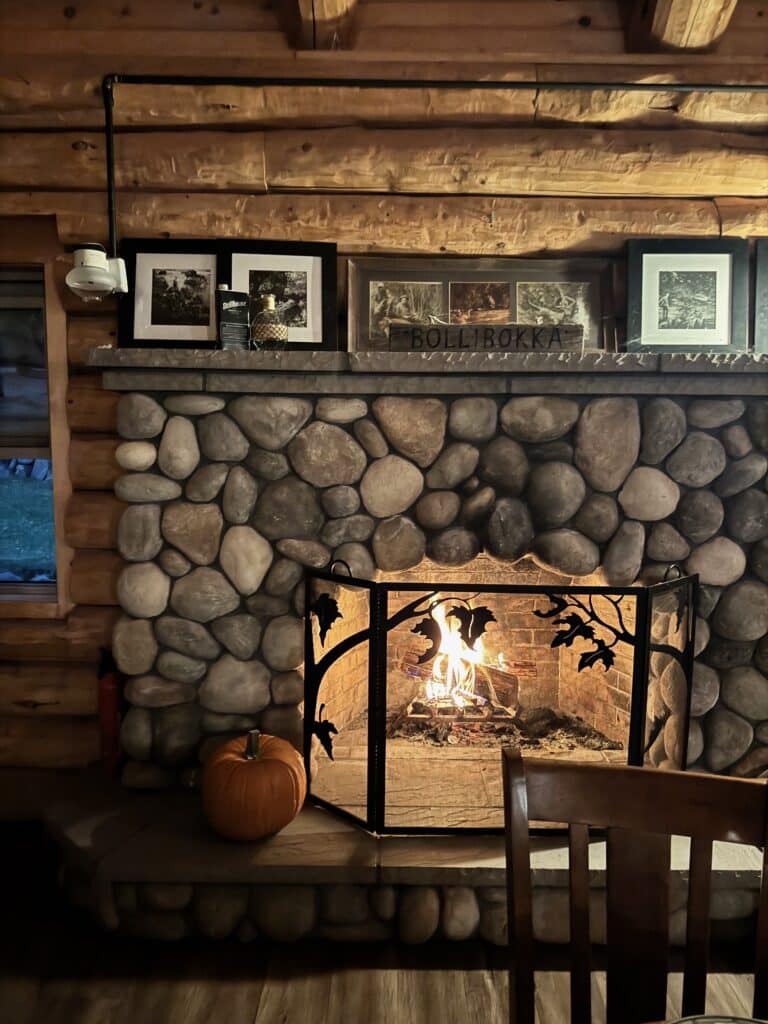
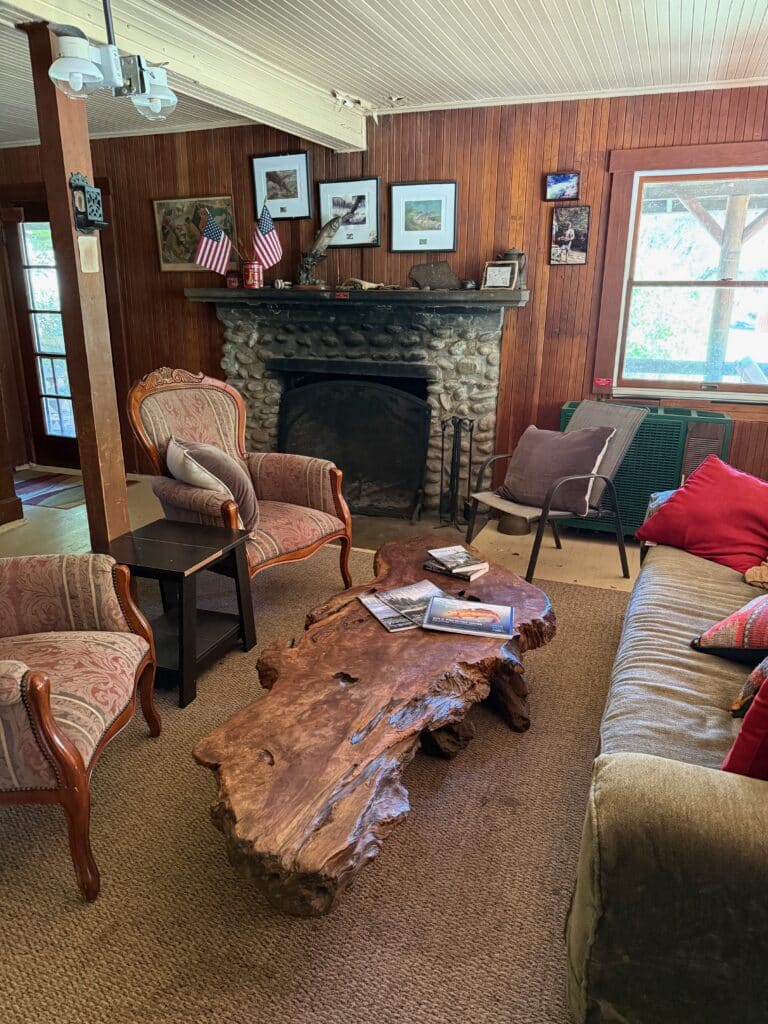
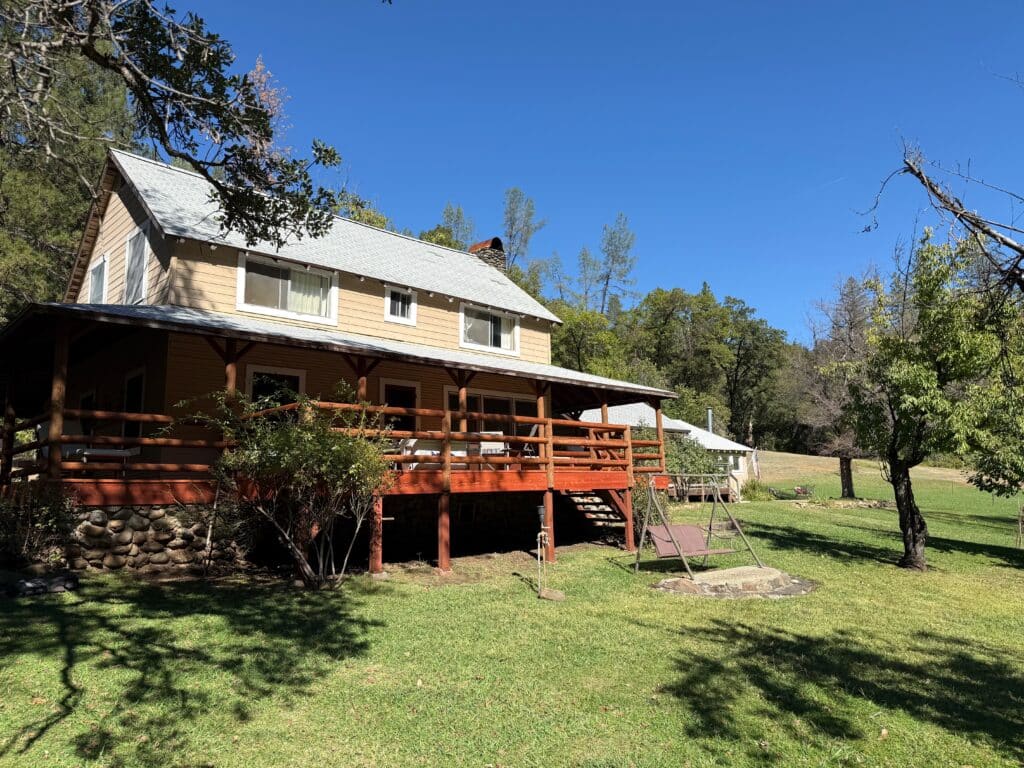
The absence of electrical outlets, phone service, or Wi-Fi ushers in a deafening quiet. When was the last time you heard nothing? The silence negotiates only with the ambient rush of the McCloud through the windows, the shuffling of footsteps, and easy laughter within. (Please note: none were so brave as to play the vintage piano, acoustic guitar, or casual house trumpet awaiting attention in the living room. Maybe next year.)
If Bollibokka is a practice in conservation, CalTrout is its natural collaborator. Several of their stewardship projects are local—close to us in the Upper Sacramento Basin—with a concentration on Mount Shasta’s source water, cold and percolated through volcanic rock, life-giving to Chinook salmon. CalTrout employs a win-win strategy: collaborating with local ranchers to modernize legacy irrigation systems while nurturing lasting community relationships.
SATURDAY: THE CHATTERDOWN BEAT
I wake up and follow the smell of coffee and maple syrup to a warm kitchen. Chef Ryan appears to be about seven courses into his day, jacketing thick cleaves of barbecue and sharp cheddar into torpedo rolls for pack lunches. A pile of bacon towers behind him, sourdough french toast soaks to his left, sliced fruit splays geometrically on a platter like a miniature city. I’m enjoying the amenities here. The two of us chat as we come into the morning, waiting for the others to shuffle in sleepy-eyed and hungry for a hot breakfast.
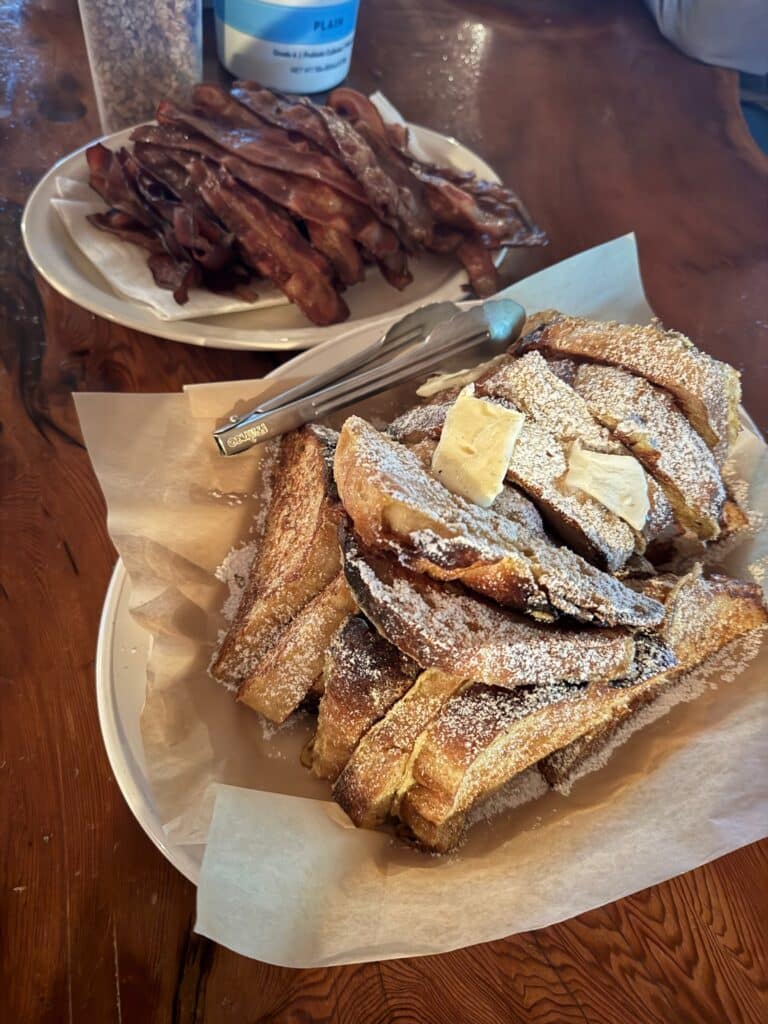
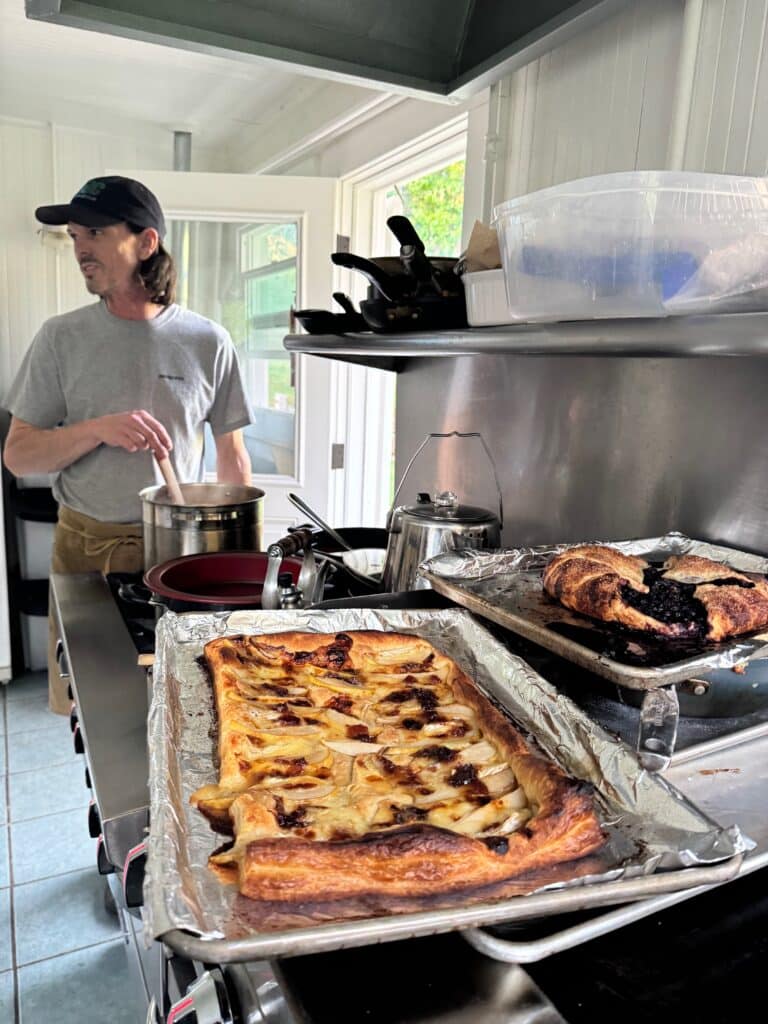
“I’m grabbing you guys for Chatterdown.” Riley Renick of Wild Waters Fly Fishing is guiding Tracey, Molly, and me. Molly—CalTrout’s ever-vibrant Development Manager and the weekend’s host—makes it officially a girls’ trip.
Chatterdown is a beast of a beat: a 45-minute hike through impossible beauty and multiple biomes. And boy, do we chatter down every one of them. We march through a pillow-pathed forest of ancient oaks; a sun-baked stretch of golden grass; a cool, green valley with a babbling brook; and a moss-coated overlook with the turquoise McCloud curling in and out of sight. (This last spot was a notable favorite of the late Craig Ballenger, whose memory remains at Bollibokka in high definition.)
While we walk, Molly calls out every native plant to round out our total-immersion experience—she yearns to learn them in their indigenous language, too.
Riley offers guidance on the first run: take an aggressive hookset here on the McCloud. “No problem,” I nod, happy to throw the reins off my worst, most unbreakable habit. I scramble down into the first hole and cast three times before meeting my first McCloud River rainbow, undeniably from the McCloud River.
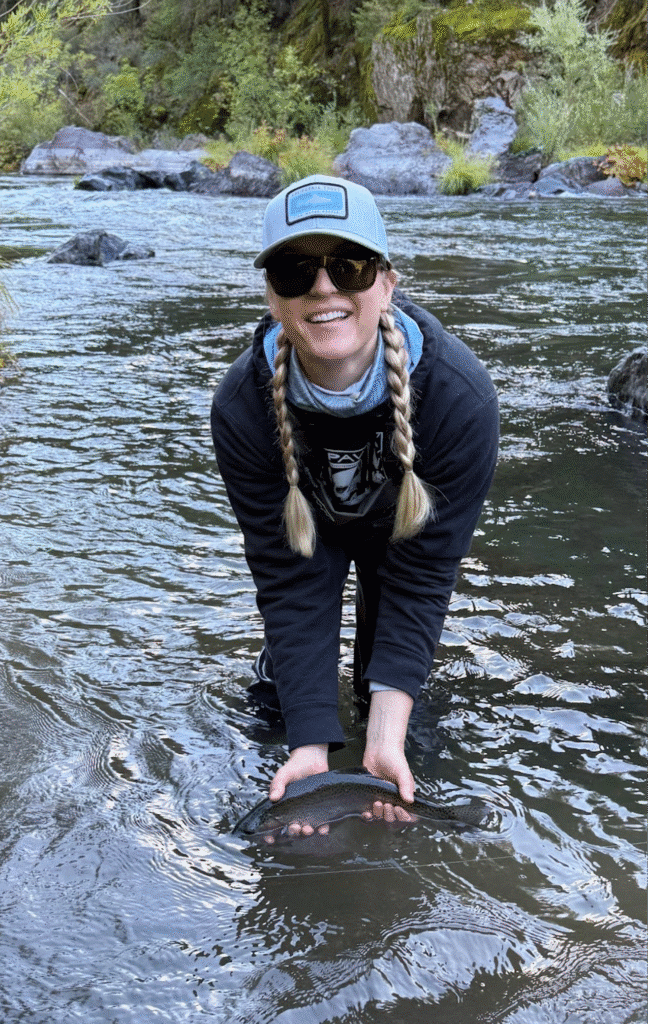
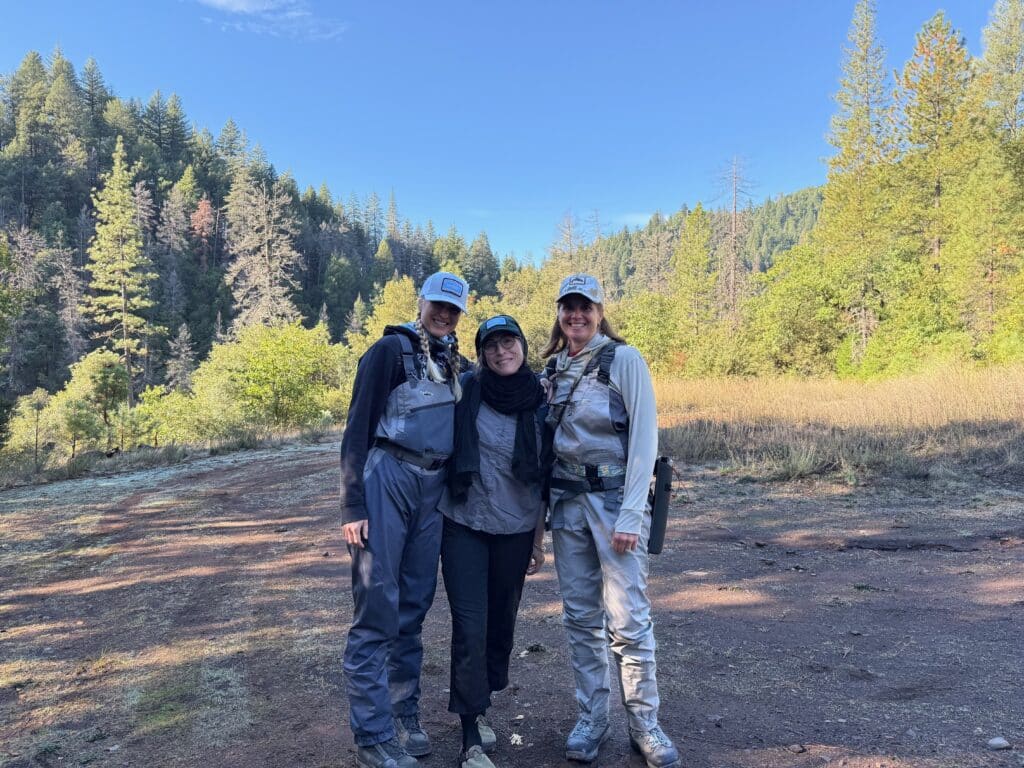
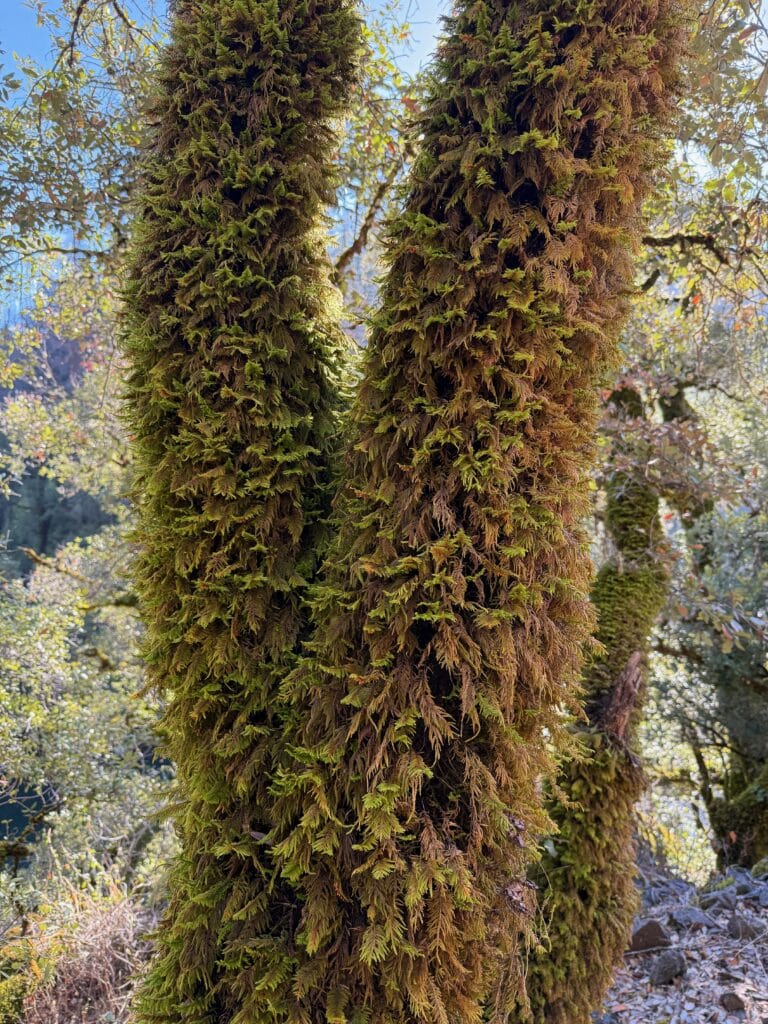
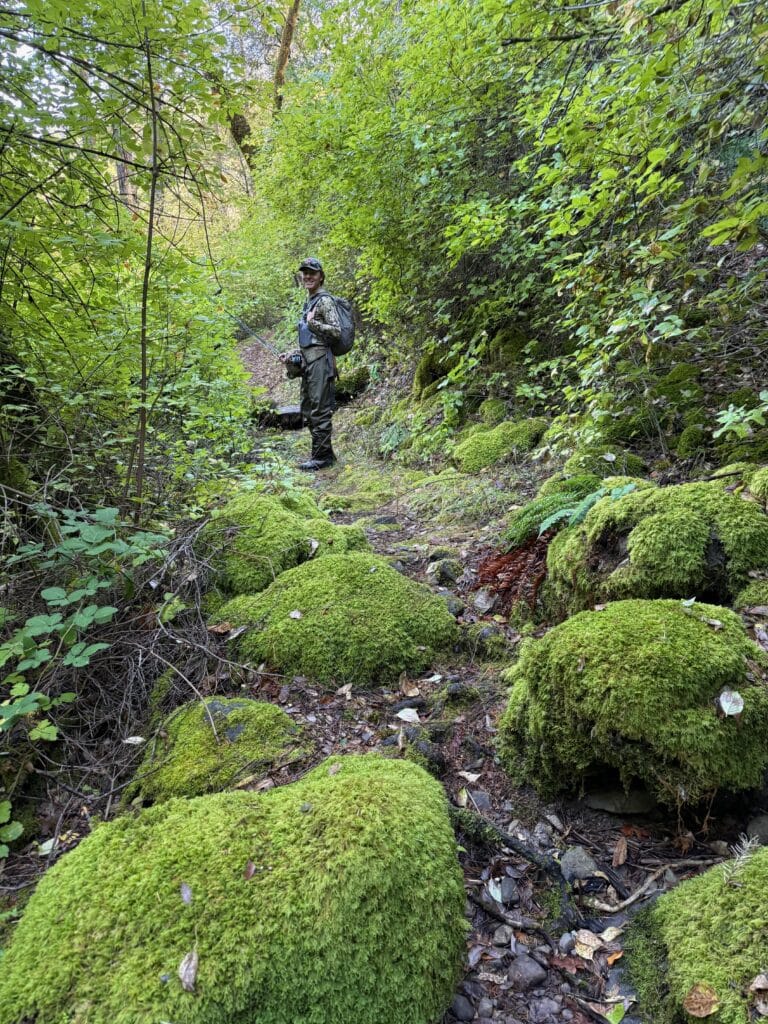
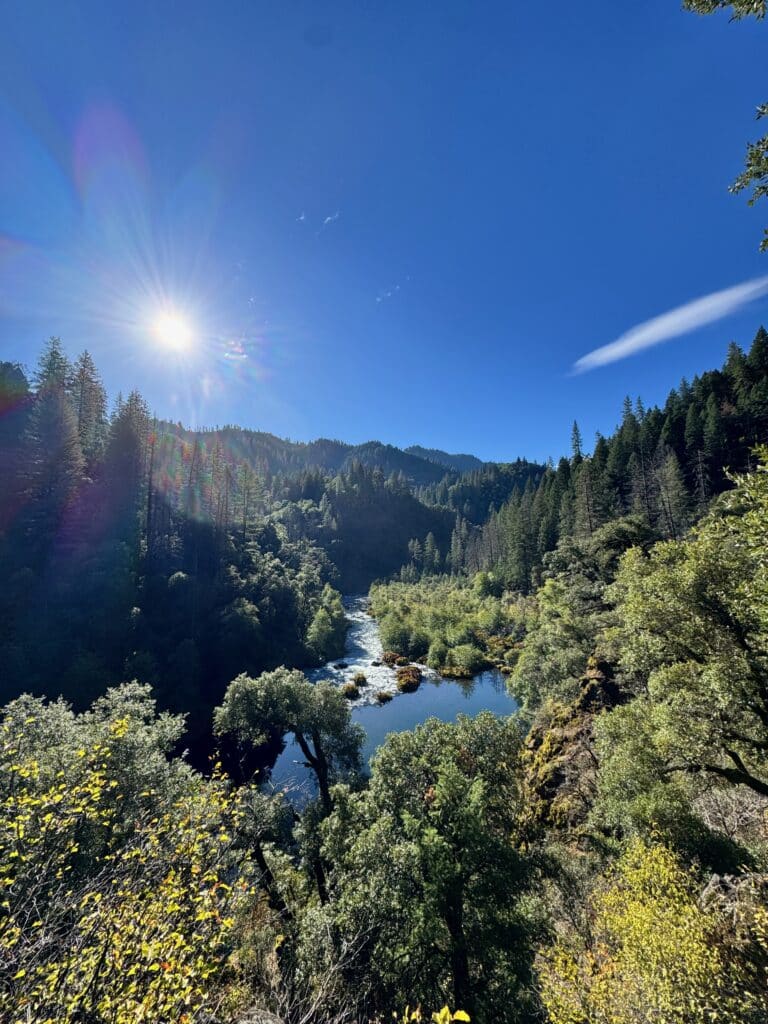
Despite its petite frame, this creature reminds me of a thoroughbred—zesty, elegant, and seemingly self-aware of its high-brow lineage. Today, the highly adaptable McCloud rainbow is the most widely distributed rainbow trout in the world, thriving in fly-fishing meccas across the Eastern U.S., New Zealand, South America, and Europe. As someone who subliminally treats trout fishing as a beauty pageant, holding the prototypical rainbow strain—capable of global exportation and proliferation—is an immense honor.
There is a cost to fishing untouched wilderness in mountain terrain, beyond the precarious self-regulation to unimaginable cinematic beauty and wild trout. We work hard for our handful: complicated footing on slick rocks in quick water, threading expensive rods through an endless sea of branches, scaling cliffsides. There’s nowhere else I’d rather be.
Back at the lodge, warm and clean with the day of fishing behind us, the larger group settles on the wrap-around porch as the sun fades behind the Cascade Range.
SUNDAY: THE PERFECT ENDING
Stunned by the dire straits our flies survived yesterday, it’s all knot-talk over pancakes and sausage. (Riley later reveals we’ve been fishing fluorocarbon the whole time—this may have something to do with it.) Mike Weir has opinions: “Swisher swirl is good for 4X to 6X, improved clinch knot for anything bigger.” We cling to every word, realizing we may have squandered some precious guide wisdom in our earlier chatter.
Wistfulness tightens its grip on the river. There’s a crispness to the air, the sun is hanging low in the October sky, and my time at Bollibokka, where simplicity and fishing rule, is nearly over. I get melancholy like this at the end of every fishing trip.
Riley takes us to a beach with a deep pool and an endless foam line that Tracey and I can fish together. It is an uncomplicated section, free of foliage and obstacles, with easy wading—the perfect kind of section. A friend is close enough to talk to, and hopefully, watch land a fish. And Tracey has one on right now.
Riley says it’s big. I think he shouldn’t say things like that. We remain hushed while Tracey stabilizes it, working the fish out of fast water gracefully, her tight line making only its most essential movements. She reels and holds, smooth and steady. Finally, Riley lifts his net from the river. It is a gorgeous brown trout, with haloed dappling like dark-roast coffee and a bright honey underbelly—the fish of the weekend.
Lost in observation, Riley kindly alerts me that I have a fish on, too. It’s found its way on the abandoned line trailing 15 yards behind me, and so I strip in while shaking my head in quiet disbelief. It’s hard to punctuate a fishing weekend better than with a glorious, last-day double up.
REFLECTIONS ON THE MCCLOUD
There are lessons to gather from McCloud River and the beings within it; their influence on domestic and international ecosystems, our influence on them. To experience Bollibokka is to celebrate preservation and exist outside of time: a rare chance to take pause, to review, collect, and consider. To look back before moving forward. Perhaps we gain wisdom and become better anglers, better docents of the land, and better people.
I am endlessly thankful to folks at The Fly Shop for their dedicated maintenance of this heritage property and piece of history, to our friends at CalTrout for hosting such an event, and to Tracey for her investment in the fly-fishing community, and for the invitation to watch her catch an enormous brown trout.
Here’s to many more years of continued history at Bollibokka and on the legendary McCloud River.
To learn more about the organizations included in this article, please visit:
caltrout.org
theflyshop.com
bollibokka.net
wildwatersflyfishing.com



